#Adams County Library System
Text

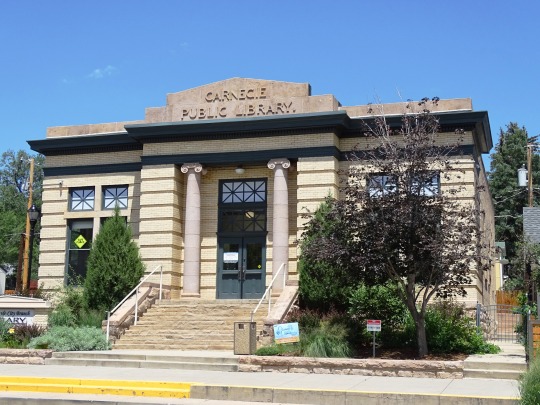






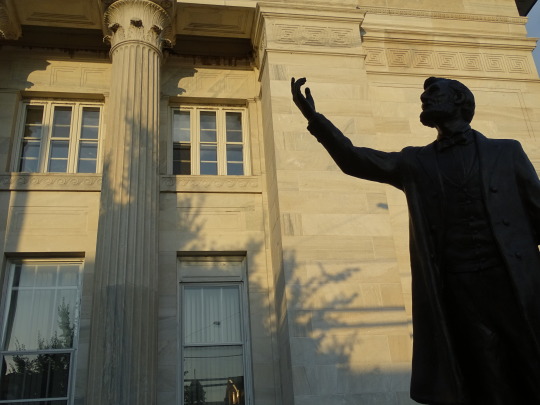










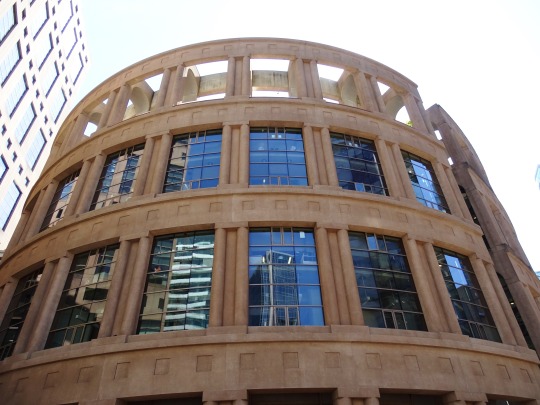

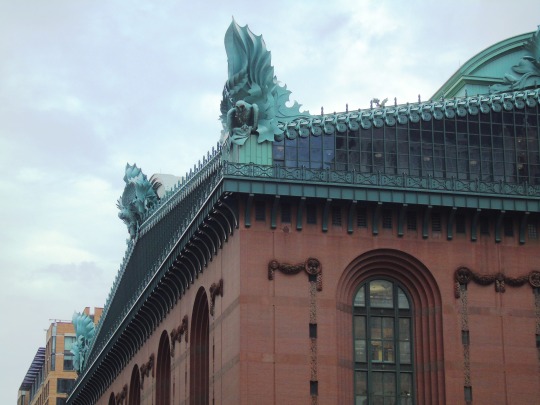

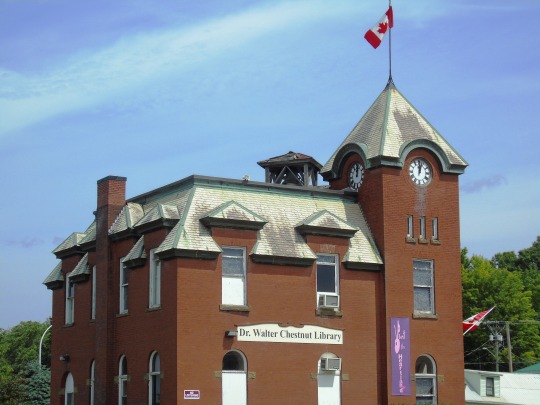




National Library Day
National Library Day is celebrated every year on 6 April. On this day, people come together to celebrate the crucial roles that libraries and librarians play in our society. It’s also the day to reflect on the importance of reading and how essential it is to make books accessible and affordable for every reader. A well-stocked library can introduce readers to many new worlds, and helps them become more informed citizens. Libraries are also great community spaces where people can gather to exchange ideas and learn together.
History of National Library Day
Libraries aren’t a new concept — it dates back millennia. The first systematically organized library was founded in the 7th century B.C. by Assyrian ruler Ashurbanipal in Nineveh, in contemporary Iraq. It contained approximately 30,000 cuneiform tablets sorted by subject.
Since their inception, almost every great civilization has built libraries. They became great repositories of knowledge, and a few ancient libraries live on even today. The goal of these libraries was to collect knowledge and distribute it for its use in everyday life. Special importance was given to books on agriculture, architecture, medicine, art, manufacturing, war, and topics concerning the betterment of life. As the years went by, people realized the benefits of having publicly accessible centers of knowledge, and libraries became an important feature in cities and towns across the world.
As the influence of the Internet grew, many believed that there would no longer be a need for libraries, but history has proved otherwise, as libraries continue to flourish and are now more popular than ever! Not everything can be found on the Internet, and a good amount of information is still available only on paper, and despite the convenience of the world wide web, people still like to physically visit a library and spend time among books and other readers.
National Library Day timeline
4th Century B.C.
Institutional Libraries
Libraries start to become an important part of educational institutions.
13th to 15th Century
Private Book Collections
The royals in Europe start to keep book collections for private use.
17th to 18th Century
National Libraries
Libraries in free countries of the world become government properties.
19th Century
Community Libraries
Community libraries are founded at public expense.
National Library Day FAQs
Is April National Library Month?
Yes, April is National School Library Month.
Why do we celebrate National Library Week?
National Library Week is an annual celebration highlighting the valuable role libraries, librarians, and library workers play in transforming lives and strengthening our communities.
What is a national library?
A national library is a library specifically established by the government of a country to serve as the preeminent repository of information for that country.
National Library Day Activities
Get a library membership: Celebrate National Library Day by getting a membership at your local library. Also encourage your friends, family, colleagues, and children to get their own memberships.
Donate books: You can also celebrate National Library Day by donating books to your local libraries. You can donate new books, give away old copies, or even purchase ebooks on behalf of your local libraries.
Thank a librarian: A library is nothing without its librarians. They keep stock of the books, help readers find the resources they need, and of course, always greet us with warm smiles. Remember to thank a librarian for everything that they do on National Library Day.
5 Interesting Facts About Libraries
Benjamin Franklin started a lending library: It was also one of the oldest libraries in America.
Andrew Carnegie was a great patron: He helped open 2,509 libraries across the world and 1,679 libraries in America.
Library fines add up to extraordinary amounts: In 2016, the San Jose Public Library reported $6.8 million in late fees.
Libraries also offer free music: They do so by having access to music streaming platforms.
They are big employers too: There are approximately 1,85,000 librarians in America.
Why We Love National Library Day
It keeps libraries thriving: Celebrations such as National Library Day ensure that our libraries continue to thrive despite the influence of the internet. These celebrations also bring thousands of new patrons to libraries every year.
For the love of reading: Anyone who loves reading also loves National Library Day. It’s the best way to ensure that everyone has access to good books and that future generations continue to buy and read books.
It builds communities: Libraries are also an important part of our community. People of all ages can visit their local library to read, work, find resources, and spend time with like-minded readers. National Library Day helps keep our communities alive.
Source
#Vancouver Public Library's Central Branch#Moshe Safdie#travel#original photography#vacation#tourist attraction#landmark#cityscape#architecture#New York Public Library#Stephen A. Schwarzman Building#Boston Public Library McKim Building#Adams County Library System#Gettysburg#Carrère and Hastings#National Library Day#NationalLibraryDay#6 April#USA#Canada#Old Colorado City Branch Carnegie Library#Van Wert#Ottawa#Library of Parliament#Chicago#Toronto#Stellarton#Hartland#Texas State Capitol#Philadelphia
0 notes
Text
Largest Book Publisher Joins Forces to Combat Book Banning
Photo by Ahmed ツ on Pexels.com
Penguin Random House, the leading book publisher in the nation, has partnered with PEN America in a significant endeavor to challenge book banning. In an ongoing legal battle, they have joined a coalition comprising parents, authors, and concerned individuals who filed a federal lawsuit against the imposition of bans in Escambia County, Florida.
Escambia County, situated in northwest Florida, has recently enacted restrictions on or removed a minimum of 16 books from public school libraries and classrooms. The banned books encompass a wide range of literary works, including the debut novel of a Nobel Prize laureate and a beloved coming-of-age bestseller from the 1990s.
Among the contested books is "The Perks of Being a Wallflower," which not only achieved success as a novel but also gained popularity as a hit movie. Last autumn, a local high school teacher raised objections to this book and over a hundred others, prompting Christian activists to voice their concerns at multiple school board meetings.
One such activist, Aaron Schneier, a parent from Pensacola, defended the removal of books, arguing that it does not constitute censorship to exclude explicit or sexually provocative literature from school settings. School board member Kevin Adams supported the removal of "The Perks of Being a Wallflower" from the optional 12th-grade novel study, emphasizing the need to establish standards of conduct and manners for students that align with his personal values.
Suzanne Nossel, the executive director of PEN America, expressed the organization's commitment to defending free speech. Over the past two years, PEN America has meticulously documented more than 4,000 cases of book bans or removals. Escambia County's situation was deemed particularly egregious, prompting the decision to file this lawsuit. The plaintiffs involved include affected parents, students, Penguin Random House as an affected publisher, and other concerned individuals. They collectively advocate for the intervention of the judicial system to uphold constitutional rights.
Among the plaintiffs is Ashley Hope Perez, an acclaimed writer whose bestselling book, "Out of Darkness," depicts a love story between a Mexican American girl and an African American boy. Perez humorously remarks that her book is "super banned," having faced bans in numerous locations, including Escambia County. She observes a recurring pattern wherein books like hers become targets for removal by groups such as Moms for Liberty, which offer pre-prepared talking points. Perez further highlights the lack of substantive engagement with the content of these books, often accompanied by repetitive typographical errors.
While Perez prefers open discussions over legal battles, she recognizes the necessity of utilizing the tools of democracy during this critical moment. She emphasizes that young people seek narratives that are not sanitized but rather provide opportunities to explore challenging issues and imagine lives different from their own.
In response to the mounting pressure, the Escambia School Board announced a temporary halt to book challenges, extending indefinitely. NPR's attempts to obtain comments from the school board went unanswered.
The joint efforts of Penguin Random House, PEN America, and the coalition of plaintiffs underscore a broader fight against book banning, advocating for the preservation of intellectual freedom and the exploration of diverse perspectives.
Read the full article
0 notes
Text
Library System Welcomes New Director

A familiar face will be taking the place of long-time library director Eric Head.
Library System Welcomes New Director
Adam Chang, formerly the Region Manager for the Citrus County Library System (Citrus Libraries), was recently selected as the new Director of Library Services, replacing Eric Head in February. Head left the position in January upon his appointment to Director of Community Services. Director Headspent 27 years with the library system, with 12 of those years spent at the helm.
Adam Chang is no stranger to the library world. He began his career in libraries at Polk County’s MulberryPublic Library. There, he worked to develop technology programs and received various grants to expandlibrary services. Adam made the move to Citrus County in 2014, when he began working at the CoastalRegion branch in Crystal River; he has since spent time working in each of Citrus Libraries’ five branchlocations.
In his time with the library system, Adam has held a variety of positions, including Instruction & ResearchLibrarian, Circulation Supervisor, Branch Supervisor, and Branch Manager. In his most recent position asRegion Manager, Mr. Chang coordinated the Homosassa and Lakes Region branches while serving as lead for both the Youth Services and Adult Literacy teams. Mr. Chang has also worked to develop award-winning programs for Citrus Libraries; the topics range wildly from in scope, from technology to sewing to Star Wars.
“I knew from a young age that reading and education were important to me,” said Chang. “Librariesseemed like the natural fit and have been a place where I could come into my own, while also learningfrom others through their experiences and stories.”
Adam grew up in Citrus County after his parents moved to the area in 1990 to start a small business. Agraduate of Citrus High School, Adam also holds an MBA and a Master of Library Science from theUniversity of South Florida.
“When the opportunity to work on the Citrus Libraries team was presented, I was excited to return to thecommunity where I grew up,” recalled Chang. “Being able to give back to the community the invested somuch into me has been a driving force behind the work that I’ve done this far and will continue to do.”
Adam is actively engaged in the library community and advisory groups around Florida. He is a graduateof Leadership Citrus, class of 2020, and was recently voted as one of the Citrus County Chamber ofCommerce Young Professionals’ 40 Under 40. Currently, Adam is the president of the Tampa Bay LibraryConsortium (TBLC) Board of Directors and is a member of the Florida Library Association (FLA), wherehe was recognized as the Outstanding New Librarian in 2019.
To learn more about the Citrus County Library System, visit www.citruslibraries.org.
Read the full article
0 notes
Text
For Circulate Model Of Multiple Individuals
Horrigan, John. "Use of Cloud Computing Applications and Services." Pew Research Internet Project. Notably related to this study are the purposes of NE to basic (video) recreation enjoying. Docs are adamant that patients receive flu vaccines annually. Influenza is brought on by any variety of flu viruses. The IRS and Division of Motor Automobiles will still have your info saved underneath your outdated number as nicely. All your previous data will nonetheless be related along with your previous quantity, together with your credit score historical past. But even if you happen to do change your name and SSN, the system will nonetheless have information that hyperlink the "new" you to the "outdated" you. That approach, "seconds" will even be protected to eat. Unfortunately, her tenacious former husband finds the ring that refused to be sucked into the secure confines of the sewer system. These notebooks don't run off of a Windows, Apple, or Linux working system as most absolutely-functioning computers do. The courtroom will then run an ad within the official county organ as soon as a week for the following month to see if anybody has an objection to the request. An organ is only a fancy name for newspaper or bulletin. The first step to creating the brand new you is to change the identify your mother and father gave you.
Howard was certainly one of the first HBCUs to be nonsectarian. What would you do if you happen to got here across one? Absolutely rubbish automobile from the 1980s. They consistently fell over due to only having three wheels, with one in the front and two within the again. It will depend on what they'd want me to do to get again of their good graces. Take heed to what your physician says -- it may take weeks to months to go back to normal ranges of activity relying on the severity of the injury. It could possibly take as much as four days for flu to discover a foothold in your physique and then start to manifest signs. The procedure for altering your title varies by state, so it is advisable test with your county courtroom or on the internet to seek out out the exact steps you might want to observe. Sadly, this is not the case -- you may be discovered ultimately.
You bet. If you aren't careful about managing your case of the flu, it can undoubtedly flip into pneumonia and then, as they are saying, the game is getting out of hand. Right here in Georgia where HowStuffWorks is predicated, you might want to fill out a petition requesting the change. I watch the rest of the video games however complain about my crew getting knocked out. Whereas AlphaZero-like approaches sometimes require sport-particular domain information to define a Deep Neural Network’s architecture and its enter and output tensors, we solely require such domain data at the level of the general game system as an entire, and can now leverage Ludii’s wide library of video games - which can quickly grow thanks to its person-pleasant game description language - to facilitate extra common game AI research with minimal requirements for sport-particular engineering efforts. In the evaluation, the output for every unique MR is compared in opposition to all references and the utmost rating is used, naturally resulting in larger scores. Testing is carried out both on the FollowMeUp test set and COCO validation set. We consider the same networks on the test and challenge splits. This year is moving much in the identical direction as 2021, the year Pc gaming left the desktop Pc (opens in new tab), with the continuing exodus to recreation streaming platforms, and gaming laptops more powerful than we have seen before.
You've seen it in movies. Changing your identification and starting over is a standard motif in books and films. So for the needs of merely "beginning over," you won't be able to change your SSN legally. In this text, we'll look at the authorized methods to alter your identify and Social Security number. At each time, the defender selects a subset of sensors to scan, while the number of chosen sensors modifications based mostly on the surroundings and scanning history, amongst other factors. After faking her own death in a boating accident, she flushes her wedding ring down the rest room, moves to a brand new city, changes her identification and starts over. For evo 88 , vaccines generally imply the distinction between life and dying. Generally, they mean just a few sick days. Who says buying magic will not be achievable nowadays? A mob informant will get set up in the Witness Safety Program. The principle concept is to set the weights of the weak classifiers. Having no credit score historical past will make it tough to get a brand new line of credit. Subsequently, players change their 5-participant line typically with other players on the bench.
1 note
·
View note
Text

Madison County Library System: McWillie family (Adam, 1766-1827). (Click to view the full record.) http://ow.ly/INnC50E5r7Z
#Madison County Library System#Adam McWillie#William McWillie#Madison County (Miss.)#genealogy#1700s#1800s#1900s#msdiglib
2 notes
·
View notes
Text
Real penalties for covid evicters
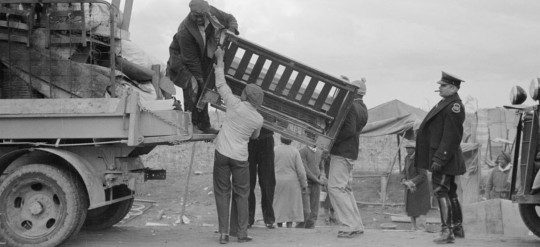
The CDC's eviction moratorium in an incredibly important piece of public-health law: people facing homelessness may not shelter in place when they're sick, and people who are rendered homeless are at risk of both contracting and spreading covid.
Despite this, many states and cities have treated the moratorium as a suggestion, not a binding law, and, of course, it's hard to get justice when you've just been evicted (the CDC seems to have brought *zero* enforcement actions against violators).
That's why the latest interim rule from the Consumer Finance Protection Bureau is so important: it affirms the CDC rule and makes many other parties liable for its violation, including, notably, landlords' lawyers and debt collectors.
https://files.consumerfinance.gov/f/documents/cfpb_debt_collection-practices-global-covid-19-pandemic_interim-final-rule_2021-04.pdf
As Adam Levitin writes for Credit Slips, this is a very big deal indeed, because in addition to expanding liability, it also expands who has a right to seek redress.
https://www.creditslips.org/creditslips/2021/04/evictions-in-violation-of-cdc-moratorium-may-violate-fair-debt-collection-practices-act.html
Under the CDC rule, only the government could punish evicters, but CFPBs rule come wiht a "private right of action." This means evicted people can seek redress for people who break the law to render them homeless, including lawyers representing lawbreaking landlords.
CFPB rules come under the Fair Debt Collection Practices Act, which also provides for statutory damages, actual damages, attorneys' fees, and class actions.
Levitin: "How many attorneys are going to want to assume this risk to further a foreclosure for a client? I suspect that an informed attorney will be much more inclined to counsel the client to follow the CDC moratorium."
It's a good example of how important a private right of action. It's why private right of action is a major sticking point in proposals for a national privacy law: the commercial surveillance industry does not want you to have recourse to legal self-defense.
Europe's flawed but crucial GDPR includes a private right of action, which is why Digital Rights Ireland is able to bring a mass action lawsuit against Facebook over its 500,000,000-user data-breach.
https://pluralistic.net/2021/04/16/where-it-hurts/#sue-facebook
Without a private right of action, people who've been harmed, even maimed or killed, by corporations have to petition DAs and Attorney Generals to take up their case, while private rights of action allow everyday people to seek justice on their own.
That's why private right of action scares the shit out of corporate lobbyists and why they've spent decades running a disinformation campaign aimed at ending it ("tort reform"), pushing lies like "The McDonald's Coffee Lawsuit."
https://www.youtube.com/watch?v=Q9DXSCpcz9E
Private right of action is especially important when it comes to housing. The collapse of the defined-benefits pension system has forced everyday people to gamble in a rigged stock market as a hedge against a starving and homeless retirement.
https://pluralistic.net/2021/01/30/meme-stocks/#stockstonks
Many everyday, middle-class Americans rely on their homes as a retirement piggy-bank, which sets up an unresolvable contradiction in American finance policy. To keep home-owners solvent, politicians have to take every possible step to make housing as expensive as possible.
When you put it that way, it's obvious why this is such a bad idea: housing is a human right and a necessity for human thriving. Policies that seek to make housing expensive ("increase property values") are as indefensible as policies to make food as expensive as possible.
So: if you own a house, you get a tax subsidy (a direct way of increasing property values). The tenants you rent it to don't get that subsidy (an indirect means to increase tax as it pushes renters into home ownership, bidding up prices).
https://prospect.org/justice/widely-beloved-tax-deduction-really-just-benefits-well-off-exacerbates-inequality/
Converting the human right to shelter into an asset that is its owner's best hope for a dignified old age distorts all kinds of policy, pushing otherwise decent people to block high-density housing because increasing housing supply decreases the value of their assets.
It sets parents to war against their children, who have to compete for the dwindling supply of available housing, or rent under conditions that favor landlords.
But (as with market-based 401k pensions), the property investment game is rigged in favor of the super-rich, who use "mom-and-pop" investors as human shields for policies that benefit private equity ghouls.
In many places in America, your landlord is almost certainly a Wall Street fund, not a nice old couple who bought "income property" for their retirement.
https://www.reuters.com/investigates/special-report/usa-housing-invitation/
Wall Street landlords spin rental income into bonds, and secure high ratings for them by turning housing into deadly slums with high payments and low costs, backstopped by evictions, once unheard of in America, now a national (and racist) epidemic.
https://www.newyorker.com/magazine/2016/02/08/forced-out
When you hear about the CDC eviction moratorium, you might picture a retiree renting out the family home after downsizing to a condo. But the median American landlord is a faceless, remorseless Wall Street fund engaged the wholesale destruction of cities and their residents.
America needs lots of housing. To get there, America needs a social safety net, a guarantee of a decent retirement for people who work hard all their lives - not a seat at a table in a rigged stock-market casino, nor a chance to destroy their kids' chances at a decent home.
Image:
Arthur Rothstein (1915-1985)
"State highway officials moving evicted sharecroppers away from roadside to area between the levee and the Mississippi River, New Madrid County, Missouri"
Library of Congress:
https://www.loc.gov/resource/fsa.8a10435/
78 notes
·
View notes
Text
Taryn Simon at Gagosian New York and the New York Public Library
June 14, 2021

TARYN SIMON
The Color of a Flea’s Eye: The Picture Collection
July 14–September 11, 2021
Gagosian, 976 Madison Avenue, New York
Opening Fall 2021
New York Public Library, Stephen A. Schwarzman Building, 476 Fifth Avenue
__________
Gagosian is pleased to announce The Color of a Flea’s Eye: The Picture Collection by Taryn Simon, an exhibition in two parts at Gagosian 976 Madison Avenue and the New York Public Library at 42nd Street and Fifth Avenue.
In her work, Simon engages organizational systems—bloodlines, criminal investigations, mourning, global diplomacy—to reveal the hidden contours of authority. From photography to sculpture, text, sound, and performance, her projects involve extensive field research both on and with archives, individuals, and institutions.
Nine years in the making, The Color of a Flea’s Eye foregrounds the history of the New York Public Library’s Picture Collection, whose storied contents have been available, for more than a century, for patrons to sift through in search of visual references of every conceivable kind. In 1929, Romana Javitz became the collection’s superintendent, shaping its ethos and the processes governing its growing circulation. Among her many pioneering efforts was a campaign to pointedly diversify the collection’s offerings by preserving a wide-ranging record of the country’s overlooked subjects, including folk art, documentary photography, and portrayals of African American life.
Decades before the advent of Internet search engines, the Picture Collection’s democratic classification system was designed, under Javitz’s influence, to respond to individual users, whose daily requests and interventions created a manual algorithm by which materials were transmitted back into American culture, thereby reshaping it. Used by journalists, historians, filmmakers, designers, advertisers, and the US military, the Picture Collection has also been an especially vital resource for artists. Diego Rivera consulted it for his controversial Rockefeller Center mural, Man at the Crossroads (1932–33); Joseph Cornell drew from it to make his boxed assemblages of the 1940s; and throughout the 1950s and ’60s, Andy Warhol sourced a trove of images, many never returned, that were foundational for his illustrations and paintings.
Intrigued by the Picture Collection since childhood, in 2012 Simon began to study its underlying patterns, codes, and orders. Starting with subject folders from the collection’s open stacks—Handshaking, Police, Oxygen, Broken Objects, and Financial Panics, among others—she arranged and documented their physical contents in large-format photographs, overlapping images to reveal accidental juxtapositions that suggest abstract color fields, neural networks, or tiled search results. Simon’s photography reveals the Picture Collection to be an inadvertent recorder of changing social mores, disclosing latent fault lines of power, race, and gender. At the same time, the works point to the invisible hands behind seemingly neutral systems of image-gathering, locating an unlikely futurity in the past.
The Color of a Flea’s Eye—titled after one patron’s request from 1930—examines the forces that compel us to revise which images we value. In the Gagosian exhibition at 976 Madison Avenue, Simon’s photographs are accompanied by archival letters and objects from Romana Javitz, Dorothea Lange, Joseph Cornell, Andy Warhol, and Walker Evans, demonstrating the Picture Collection’s critical role in the history of twentieth-century image-making, and that of American photography in particular. In the fall of 2021, a special installation of Simon’s photographs will open at the New York Public Library’s flagship Stephen A. Schwarzman Building. Together, these presentations focus on a forgotten period of public hunger for visual material, and in doing so provoke questions about the fate of—and our relationship with—the images we consume.
Organized by Simon with Joshua Chuang, senior curator of photography at the New York Public Library, The Color of a Flea’s Eye: The Picture Collection is accompanied by a comprehensive monograph of the same title, published by Cahiers d’Art.
Taryn Simon was born in 1975 in New York, where she currently lives and works. Collections include the Metropolitan Museum of Art, New York; Solomon R. Guggenheim Museum, New York; Los Angeles County Museum of Art; Tate Modern, London; and Centre Pompidou, Paris. Exhibitions include An Occupation of Loss, Park Avenue Armory, New York (2016); An American Index of the Hidden and Unfamiliar, Louisiana Museum of Modern Art, Humlebaek, Denmark (2021); The Pipes, MASS MoCA, North Adams, MA (2021). Monographs include The Innocents (2003); An American Index of the Hidden and Unfamiliar (2007); Contraband (2010); A Living Man Declared Dead and Other Chapters I – XVIII (2012); Field Guide to Birds of the West Indies (2015); Paperwork and the Will of Capital (2016); and An Occupation of Loss (2017).
_____
Installation view, Taryn Simon: The Color of a Flea’s Eye: The Picture Collection, New York Public Library, 2020. Artwork © Taryn Simon. Photo: Rob McKeever
5 notes
·
View notes
Photo

History Is All You Left Me (photo hunt part 2 - 1/5) We were lucky to meet Adam Silvera at the Orlando Book Festival and had to take the opportunity to turn the meet into a showdown photo op!
#fyaon#2017 photo hunt#2017 yasummershowdown#history is all you left me#adam silvera#Orange County Library System#ocls#book festival
3 notes
·
View notes
Text
Sigurd Lewerentz Exhibition: Arkdes Stockholm
Sigurd Lewerentz Exhibition ArkDes Stockholm, Swedish Centre for Architecture and Design, Building Center
Sigurd Lewerentz: Architect Of Death And Life – Arkdes
3 Nov 2020
Sweden’s Most Revered Architect Subject Of Major Exhibition Opening in Stockholm In April 2021
Location: ArkDes Swedish Centre for Architecture and Design, Stockholm, Sweden
• Designed By Caruso St John
• Accompanying Monograph Published Spring 2021
Sigurd Lewerentz: Architect Of Death And Life
3 November 2020 – Sweden’s most revered architect Sigurd Lewerentz, regarded as a giant of 20th century architecture, is the subject of a major exhibition, Sigurd Lewerentz: Architect of Death and Life designed by Caruso St John, opening at ArkDes, Sweden’s national centre for architecture and design in Stockholm, in April 2021.
This will be a significant moment of assessment, the first major monograph exhibition of the work of Lewerentz since the 1980s coinciding with the publication of the first comprehensive biography.
Lewerentz, who was born in Bjärtrå in northern Sweden in 1885 and died in Lund 1975, is an enigmatic figure in the modern history of architecture. He rarely spoke publicly or published, but his influence is acknowledged by a generation of the world’s leading architects.
Colin St. John Wilson, paraphrasing E.M. Forster’s impression of the Greek poet Constantine Cavafy, said it was “as if he stood at a slight angle to the world.”
In the words of Adam Caruso, designer of the exhibition: “Lewerentz’s late projects represent an unprecedented integration of making and thought. Like Matisse, who advised young painters to cut off their tongues and communicate with brush, paint and canvas, Lewerentz was famously laconic. He did not teach and few of his own project descriptions survive. He built.”
The exhibition and the book are the result of four years of research. The majority of the objects in the exhibition are drawn from ArkDes’ own formidable collection, which will be shown alongside hitherto unknown or never previously exhibited objects that have been discovered in travels by the research team across the country.
The exhibition will cover the full range of Lewerentz’s works. Among these are three iconic projects: The Woodland Cemetery in south Stockholm, designed with Gunnar Asplund (1935-40), where many notable Swedish writers, musicians and actors are buried, including Greta Garbo, and his two late masterpieces, St Mark’s Church, in Bjorkhagen, dedicated in 1960; and St Peter’s Church, in Klippan, a town 60 kilometres north of Malmo, completed in 1966.The show will include a range of drawings of these famous buildings but also objects that show how Lewerentz’s collaborations with artists and theologians made buildings that were deeply literate and inventive about Lutheran traditions.
The exhibition will feature a newly commissioned work by the American artist Amie Siegel in the space called Boxen. Known for her layered, meticulously constructed works that trace and perform the undercurrents of systems of value, design and cultural ownership, Siegel works variously with film, video, photography, performance, sound and installation.
ArkDes will produce a landmark new book in connection with the exhibition, which will be the first ever published with full access to Lewerentz’s archive. Designed by award-winning graphic designer Malmsten Hellberg, it will contain 700 pages of drawings, photographs and models, plus excerpts from Lewerentz’s personal archive and library.
In August 2021, a Lewerentz Festival will be arranged in collaboration with partners throughout Sweden, to pay tribute to one of architectural history’s most revered, and most mythologised architects.
Kieran Long, Director of ArkDes and curator of the exhibition, said: “There is no Swedish architect with more influence on contemporary architecture today, or with more passionate advocates across the globe, than Sigurd Lewerentz. Devotees travel from everywhere in the world to see his buildings. There are very few architects in history with Lewerentz’s ability to make buildings that truly ask the biggest questions about what it means to be a modern person. His work powerfully evokes our deepest and most archaic cultural memories. But he was also fascinated by cosmetic and fleeting pleasures: Shopping, dancing, drinking and having dinner. The life of the city fascinated him and his work made a stage for our playful selves as well as our spiritual ones.”
Background
Sigurd Lewerentz
Sigurd Lewerentz was born at Sandö in the parish of Bjärtrå in Västernorrland County, Sweden. He was the son of Gustaf Adolf Lewerentz and Hedvig Mathilda Holmgren. He initially trained as a mechanical engineer at the Chalmers University of Technology in Gothenburg (1905–8). Later he took up an architectural apprenticeship in Germany.
He first opened his own architectural office in Stockholm in 1911 and became associated with the architect Gunnar Asplund (1885–1940). Together they made a winning entry for the Stockholm South (Woodland) Cemetery (Skogskyrkogården) competition of 1914–15. This project was implemented initially by both architects, however, the latter stages were done by Asplund alone. He and Asplund were appointed as the main architects for the Stockholm International Exhibition (1930) but afterwards Lewerentz became disillusioned, Lewerentz turned away from architecture for many years, and from 1940 he ran a factory producing windows and other architectural fittings of his own design.
Sigurd Lewerentz, together with his colleagues Erik Lallerstedt and David Helldén, created between 1933 and 1944 what is regarded of one of the masterpieces of functionalist architecture, Malmö Opera and Music Theatre (Malmö Opera och Musikteater). The foyer is considered of particular beauty, with its open surfaces and beautiful marble staircases and it is adorned with a number of works of art by artists such as Carl Milles and Isaac Grünewald.
He was awarded the Prince Eugen Medal for architecture in 1950. In the last decade of his life he designed two churches, St. Mark’s at Björkhagen in Stockholm (1956) and St. Peter’s at Klippan in Scania (1963–66), that revived his career in architecture.
He continued to work at competition proposals and furniture designs until shortly before his death in Lund, Sweden during 1975.
ArkDes
ArkDes, located on the island of Skeppsholmen in central Stockholm, is Sweden’s national centre for architecture and design. It is a museum, a study centre and an arena for debate and discussion about the future of architecture, design and citizenship. It is housed in a beautiful building by Rafael Moneo and more recently ArkDes´ new studio gallery, called Boxen, designed by Dehlin Brattgård Architects.
Kieran Long, Director ArkDes:
photo courtesy ArkDes Swedish Centre for Architecture and Design
Kieran Long
Kieran Long, the British curator, critic and broadcaster, was appointed Director of ArkDes in April 2017. He was the architecture critic of the London Evening Standard between 2014 and 2014. He subsequently established the department of design, architecture and digital at the V&A in London in 2013/14, of which he was Keeper between 2014 and 2017. His television work includes presenting “Restoration Home’ and ‘The House that £100k Built’ for the BBC.
Sigurd Lewerentz Architects
Previously on e-architect:
11 Jan 2019
ArkDes Swedish Centre for Architecture and Design
photo courtesy of ArkDes
ArkDes Swedish Centre for Architecture and Design Stockholm
Address: Exercisplan 4, 111 49 Stockholm, Sweden
Phone: +46 8 520 235 00
Architecture in Sweden
Swedish Architecture Designs – chronological list
Stockholm Architecture News
Stockholm Architecture Tours
Swedish Architecture – Selection
Strängnäs Cathedral Building Renewal, Strängnäs, just west of Stockholm, Sweden
Design: AART Architects
image courtesy of architects
Strängnäs Cathedral Building
Restaurant Tak, Södermalmsallén
Architects: Wingårdhs
image courtesy of architects
Restaurant Tak Stockholm
Geysir Tower, Kista
image from architects
Geysir Tower Building in Kista
Karolinska Institute Research Center
Novum BioCity Karolinska University Hospital Stockholm
Swedish Architect Offices
Comments / photos for the Sigurd Lewerentz Exhibition at ArkDes Swedish Centre for Architecture and Design page welcome
The post Sigurd Lewerentz Exhibition: Arkdes Stockholm appeared first on e-architect.
2 notes
·
View notes
Text
Events 11.1
365 – The Alemanni cross the Rhine and invade Gaul. Emperor Valentinian I moves to Paris to command the army and defend the Gallic cities.
996 – Emperor Otto III issues a deed to Gottschalk, Bishop of Freising, which is the oldest known document using the name Ostarrîchi (Austria in Old High German).
1009 – Berber forces led by Sulayman ibn al-Hakam defeat the Umayyad caliph Muhammad II of Córdoba in the battle of Alcolea.
1141 – Empress Matilda's reign as 'Lady of the English' ends with Stephen of Blois regaining the title of 'King of England'.
1179 – Philip II is crowned as 'King of France'.
1214 – The port city of Sinope surrenders to the Seljuq Turks.
1348 – The anti-royalist Union of Valencia attacks the Jews of Murviedro on the pretext that they are serfs of the King of Valencia and thus "royalists".
1503 – Pope Julius II is elected.
1512 – The ceiling of the Sistine Chapel, painted by Michelangelo, is exhibited to the public for the first time.
1520 – The Strait of Magellan, the passage immediately south of mainland South America connecting the Pacific and the Atlantic Oceans, is first discovered and navigated by European explorer Ferdinand Magellan during the first recorded circumnavigation voyage.
1555 – French Huguenots establish the France Antarctique colony in present-day Rio de Janeiro, Brazil.
1570 – The All Saints' Flood devastates the Dutch coast.
1604 – William Shakespeare's tragedy Othello is performed for the first time, at Whitehall Palace in London.
1611 – Shakespeare's play The Tempest is performed for the first time, at Whitehall Palace in London.
1612 – During the Time of Troubles, Polish troops are expelled from Moscow's Kitay-gorod by Russian troops under the command of Dmitry Pozharsky (22 October O.S.).
1683 – The British Crown colony of New York is subdivided into 12 counties.
1688 – William III of Orange sets out a second time from Hellevoetsluis in the Netherlands to seize the crowns of England, Scotland and Ireland from King James II of England during the Glorious Revolution.
1755 – In Portugal, Lisbon is totally devastated by a massive earthquake and tsunami, killing between 60,000 and 90,000 people.
1765 – The British Parliament enacts the Stamp Act on the Thirteen Colonies in order to help pay for British military operations in North America.
1790 – Edmund Burke publishes Reflections on the Revolution in France, in which he predicts that the French Revolution will end in a disaster.
1800 – John Adams becomes the first President of the United States to live in the Executive Mansion (later renamed the White House).
1805 – Napoleon Bonaparte invades Austria during the War of the Third Coalition.
1814 – Congress of Vienna opens to re-draw the European political map after the defeat of France in the Napoleonic Wars.
1848 – In Boston, Massachusetts, the first medical school for women, Boston Female Medical School (which later merged with the Boston University School of Medicine), opens.
1861 – American Civil War: U.S. President Abraham Lincoln appoints George B. McClellan as the commander of the Union Army, replacing General Winfield Scott.
1870 – In the United States, the Weather Bureau (later renamed the National Weather Service) makes its first official meteorological forecast.
1893 – The Battle of Bembezi took place and was the most decisive battle won by the British in the First Matabele War of 1893.
1894 – Nicholas II becomes the new (and last) Tsar of Russia after his father, Alexander III, dies.
1894 – Buffalo Bill, 15 of his Indians, and Annie Oakley were filmed by Thomas Edison in his Black Maria Studio in West Orange, New Jersey.
1896 – A picture showing the bare breasts of a woman appears in National Geographic magazine for the first time.
1897 – The first Library of Congress building opens its doors to the public; the library had previously been housed in the Congressional Reading Room in the U.S. Capitol.
1911 – World's first combat aerial bombing mission takes place in Libya during the Italo-Turkish War. Second Lieutenant Giulio Gavotti of Italy drops several small bombs.
1914 – World War I: The first British Royal Navy defeat of the war with Germany, the Battle of Coronel, is fought off of the western coast of Chile, in the Pacific, with the loss of HMS Good Hope and HMS Monmouth.
1914 – World War I: The Australian Imperial Force (AIF) departed by ship in a single convoy from Albany, Western Australia bound for Egypt.
1916 – In Russia, Pavel Milyukov delivers in the State Duma the famous "stupidity or treason" speech, precipitating the downfall of the government of Boris Stürmer.
1918 – Malbone Street Wreck: The worst rapid transit accident in US history occurs under the intersection of Malbone Street and Flatbush Avenue, Brooklyn, New York City, with at least 102 deaths.
1918 – Western Ukraine separates from Austria-Hungary.
1922 – Abolition of the Ottoman sultanate: The last sultan of the Ottoman Empire, Mehmed VI, abdicates.
1928 – The Law on the Adoption and Implementation of the Turkish Alphabet, replaces the Arabic alphabet with the Latin alphabet.
1937 – Stalinists execute Pastor Paul Hamberg and seven members of Azerbaijan's Lutheran community.
1938 – Seabiscuit defeats War Admiral in an upset victory during a match race deemed "the match of the century" in horse racing.
1941 – American photographer Ansel Adams takes a picture of a moonrise over the town of Hernandez, New Mexico that would become one of the most famous images in the history of photography.
1942 – World War II: Matanikau Offensive begins during the Guadalcanal Campaign and ends three days later with an American victory.
1943 – World War II: The 3rd Marine Division, United States Marines, landing on Bougainville in the Solomon Islands, secures a beachhead, leading that night to a naval clash at the Battle of Empress Augusta Bay.
1944 – World War II: Units of the British Army land at Walcheren.
1945 – The official North Korean newspaper, Rodong Sinmun, is first published under the name Chongro.
1948 – Athenagoras I, Ecumenical Patriarch of Constantinople, is enthroned.
1950 – Puerto Rican nationalists Griselio Torresola and Oscar Collazo attempt to assassinate US President Harry S. Truman at Blair House.
1950 – Pope Pius XII claims papal infallibility when he formally defines the dogma of the Assumption of Mary.
1951 – Operation Buster–Jangle: Six thousand five hundred American soldiers are exposed to 'Desert Rock' atomic explosions for training purposes in Nevada. Participation is not voluntary.
1952 – Nuclear weapons testing: The United States successfully detonates Ivy Mike, the first thermonuclear device, at the Eniwetok atoll. The explosion had a yield of ten megatons TNT equivalent.
1954 – The Front de Libération Nationale fires the first shots of the Algerian War of Independence.
1955 – The establishment of a Military Assistance Advisory Group in South Vietnam marks the beginning of American involvement in the conflict.
1955 – The bombing of United Airlines Flight 629 occurs near Longmont, Colorado, killing all 39 passengers and five crew members aboard the Douglas DC-6B airliner.
1956 – The Indian states Kerala, Andhra Pradesh, and Mysore are formally created under the States Reorganisation Act; Kanyakumari district is joined to Tamil Nadu from Kerala.
1956 – Hungarian Revolution: Imre Nagy announces Hungary's neutrality and withdrawal from the Warsaw Pact. Soviet troops begin to re-enter Hungary, contrary to assurances by the Soviet government. János Kád��r and Ferenc Münnich secretly defect to the Soviets.
1956 – The Springhill mining disaster in Springhill, Nova Scotia kills 39 miners; 88 are rescued.
1957 – The Mackinac Bridge, the world's longest suspension bridge between anchorages at the time, opens to traffic connecting Michigan's upper and lower peninsulas.
1963 – The Arecibo Observatory in Arecibo, Puerto Rico, with the largest radio telescope ever constructed, officially opens.
1963 – The 1963 South Vietnamese coup begins.
1968 – The Motion Picture Association of America's film rating system is officially introduced, originating with the ratings G, M, R, and X.
1970 – Club Cinq-Sept fire in Saint-Laurent-du-Pont, France kills 146 young people.
1973 – Watergate scandal: Leon Jaworski is appointed as the new Watergate Special Prosecutor.
1973 – The Indian state of Mysore is renamed as Karnataka to represent all the regions within Karunadu.
1979 – In Bolivia, Colonel Alberto Natusch executes a bloody coup d'état against the constitutional government of Wálter Guevara.
1979 – Griselda Álvarez becomes the first female governor of a state of Mexico.
1981 – Antigua and Barbuda gains independence from the United Kingdom.
1982 – Honda becomes the first Asian automobile company to produce cars in the United States with the opening of its factory in Marysville, Ohio; a Honda Accord is the first car produced there.
1984 – After the assassination of Indira Gandhi, Prime Minister of India on 31 October 1984, by two of her Sikh bodyguards, anti-Sikh riots erupt.
1987 – British Rail Class 43 (HST) hits the record speed of 238 km/h for rail vehicles with on-board fuel to generate electricity for traction motors.
1993 – The Maastricht Treaty takes effect, formally establishing the European Union.
2000 – Chhattisgarh officially becomes the 26th state of India, formed from sixteen districts of eastern Madhya Pradesh.
2000 – The Republic of Serbia and Montenegro joins the United Nations.
2012 – A fuel tank truck crashes and explodes in the Saudi Arabian capital Riyadh, killing 26 people and injuring 135.
2 notes
·
View notes
Photo

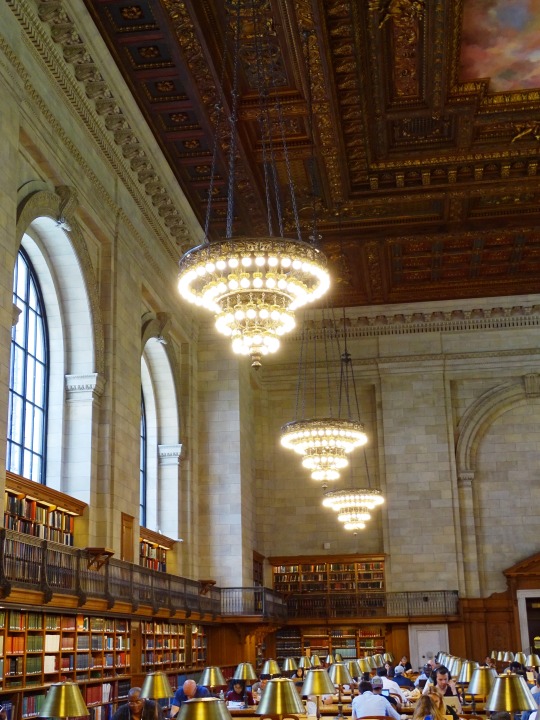




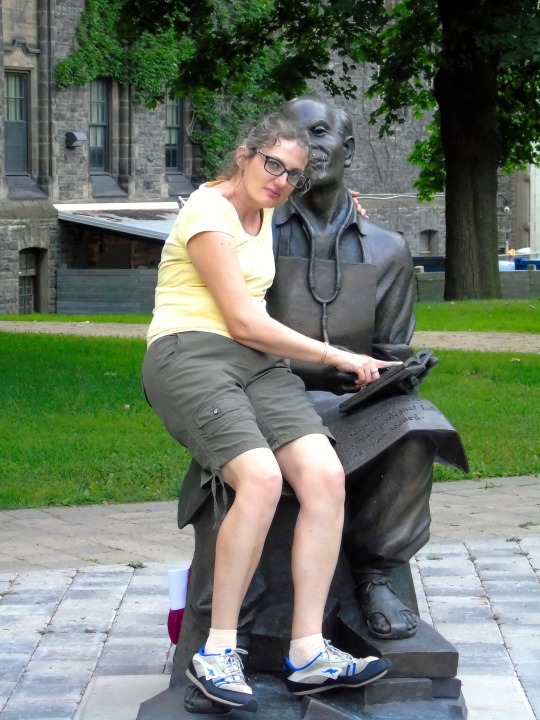



National Read a Book Day
National Read a Book Day has recognized annually on September 6th. While these bookish days may seem similar, National Read a Book Day invites us all to grab a book we might enjoy and spend the day reading. Don’t keep it to yourself. Share the experience! Read aloud either to children or grandparents. Read to your pets or your stuffed animals and plants. Reading improves memory and concentration as well as reduces stress. Older adults who spend time reading show a slower cognitive decline and tend to participate in more mentally stimulating activities over their lifetime. Books are an inexpensive entertainment, education and time machine, too.
“Any time women come together with a collective intention, it’s a powerful thing. Whether it’s sitting down making a quilt, in a kitchen preparing a meal, in a club reading the same book, or around the table playing cards, or planning a birthday party, when women come together with a collective intention, magic happens.” – Phylicia Rashad
Although the day was apparently thought of with print books in mind, e-books are equally suitable for celebrating National Read a Book Day. The primary goal is to encourage reading, as both fiction and non-fiction books open up vast unknown vistas to enquiring minds. Taking the opportunity to enjoy some time out of the day to relax and read is good for the soul and the mind.
History of National Read a Book Day
The first ceremony of National Read a Book Day was around the end of the first decade of the 2000’s and was almost certainly the idea of a librarian, probably one who was supporting youngsters to read a book. On National Read a Book Day, it’s not mandatory to read a whole book but the day serves as an inspiration to people to read a section of a book they particularly enjoyed, to read with children, to donate a book to a children’s school library, or to host a book reading party.
How to Celebrate National Read a Book Day
Whether you are a fan of fiction, non-fiction, science fiction, history, medical literature, little stories or any of the hundreds of genre of literature out there, here are some ways you can celebrate National Read a Book Day, Read that book you have always been expecting to pick up and read. Revisit your desired book and read it again. Combine a local book club so that you have more motivation to learn. If you are previously a part of a book club, what about creating a book party for them? Invite all the book club members and consider a book while enjoying dishes inspired by your favorite books. Learn more about the life and work of your beloved author. Visit your local library, and if you are not already a member, become one. Support your local library or any reading initiatives that exist in your neighborhood by volunteering your time, money or expertise.
Source
#Norman Bethune by David Pellettier#Rose Main Reading Room#6 September#Stephen A. Schwarzman Building#New York Public Library#Toronto#Sweden#USA#Canada#Marstrand#Cincinnati#National Read a Book Day#Gettysburg#President Abraham Lincoln by Stanley J. Watts#architecture#cityscape#Adams County Library System#San Francisco#Robert Louis Stevenson Memorial by Bruce Porter#Boston Public Library McKim Building#Vancouver Public Library#John Steinbeck#Cannery Row Monument by Steven Whyte#Monterey
1 note
·
View note
Text
What Did The Democratic Republicans Stand For
New Post has been published on https://www.patriotsnet.com/what-did-the-democratic-republicans-stand-for/
What Did The Democratic Republicans Stand For

Why Did The Democratic Republicans Reject Implied Powers
Democratic Republicans opposed implied powers because they believed in a strict interpretation of the Constitution. Jefferson and Madison accepted the idea of implied powers, but only in a limited sense. They felt implied powers includes only those powers absolutely necessary to carry out an express or written power.
From Watergate To A New Millennium
From 1972 to 1988 the Democrats lost four of five presidential elections. In 1972 the party nominated antiwar candidate George S. McGovern, who lost to Nixon in one of the biggest landslides in U.S. electoral history. Two years later the Watergate scandal forced Nixons resignation, enabling Jimmy Carter, then the Democratic governor of Georgia, to defeat Gerald R. Ford, Nixons successor, in 1976. Although Carter orchestrated the Camp David Accords between Egypt and Israel, his presidency was plagued by a sluggish economy and by the crisis over the kidnapping and prolonged captivity of U.S. diplomats in Iran following the Islamic revolution there in 1979. Carter was defeated in 1980 by conservative Republican Ronald W. Reagan, who was easily reelected in 1984 against Carters vice president, Walter F. Mondale. Mondales running mate, Geraldine A. Ferraro, was the first female candidate on a major-party ticket. Reagans vice president, George Bush, defeated Massachusetts Governor Michael S. Dukakis in 1988. Despite its losses in the presidential elections of the 1970s and 80s, the Democratic Party continued to control both houses of Congress for most of the period .
Presidency Of Franklin D Roosevelt
The stock market crash of 1929 and the ensuing Great Depression set the stage for a more progressive government and Franklin D. Roosevelt won a landslide victory in the election of 1932, campaigning on a platform of “Relief, Recovery, and Reform”, that is relief of unemployment and rural distress, recovery of the economy back to normal and long-term structural reforms to prevent a repetition of the Depression. This came to be termed “The New Deal” after a phrase in Roosevelt’s acceptance speech.
The Democrats also swept to large majorities in both houses of Congress and among state governors. Roosevelt altered the nature of the party, away from laissez-faire capitalism and towards an ideology of economic regulation and insurance against hardship. Two old words took on new meanings: “liberal” now meant a supporter of the New Deal while “conservative” meant an opponent.
Conservative Democrats were outraged and led by Al Smith they formed the American Liberty League in 1934 and counterattacked. They failed and either retired from politics or joined the Republican Party. A few of them, such as Dean Acheson, found their way back to the Democratic Party.
Presidency Of Barack Obama
On January 20, 2009, Obama was inaugurated as the 44th president of the United States in a ceremony attended by nearly 2 million people, the largest congregation of spectators ever to witness the inauguration of a new president. That same day in Washington, D.C., Republican House of Representative leaders met in an “invitation only” meeting for four hours to discuss the future of the Republican Party under the Obama administration.
One of the first acts by the Obama administration after assuming control was an order signed by Chief of StaffRahm Emanuel that suspended all pending federal regulations proposed by outgoing President George W. Bush so that they could be reviewed. This was comparable to prior moves by the Bush administration upon assuming control from Bill Clinton, who in his final 20 days in office issued 12 executive orders. In his first week, Obama also established a policy of producing a weekly Saturday morning video address available on Whitehouse.gov and YouTube, much like those released during his transition period. The policy is likened to Franklin Delano Roosevelt‘s fireside chats and George W. Bush’s weekly radio addresses.
When asked by David Gregory about his views on same-sex marriage on Meet the Press on May 5, 2012, Biden stated he supported same-sex marriage. On May 9, 2012, a day after North Carolina voters approved Amendment 1, President Obama became the first sitting United States president to come out in favor of same-sex marriage.
Support For Amendments As Political Diversion


Despite North Carolinas refusal to ratify the Constitution without the addition of amendments, the states governor, Samuel Johnston , opposed any material Alterations to the Constitution but advocated for a Flourish & Dressing . . . such as a pompous Declaration of Rights. Johnston was one of the many Federalists who supported amendments for personal liberties only as a political tactic to fend off more substantive changes in federal powers.
Letter from Samuel Johnston to James Madison, July 8, 1789. Manuscript. James Madison Papers, Manuscript Division, Library of Congress
Bookmark this item: //www.loc.gov/exhibits/creating-the-united-states/formation-of-political-parties.html#obj3
Opposition To The Alien And Sedition Acts
The Alien and Sedition Acts were enacted by Federalists fearful of a violent overthrow of the government as French refugees fled to the United States from revolutions in France and Haiti. The acts restricted immigration and made strong criticism of public officials illegal. Several newspaper publishers and writers were imprisoned for seditious writings. Many Americans opposed a federal sedition law, arguing that it violated the Constitution and also unconstitutionally infringed on the right of states to regular free speech through slander laws. This petition to the United States Congress was part of a Republican Party effort to repeal the Alien and Sedition Acts.
To the Senate and Representatives of the United States, in Congress Assembled. Poughkeepsie, New York: Nicholas Power, 1798. Broadside. Rare Book and Special Collections Division. Library of Congress
Bookmark this item: //www.loc.gov/exhibits/creating-the-united-states/formation-of-political-parties.html#obj15
America Should Deport Illegal Immigrants
Republicans believe that illegal immigrants, no matter the reason they are in this country, should be forcibly removed from the U.S. Although illegal immigrants are often motivated to come to the U.S. by companies who hire them, Republicans generally believe that the focus of the law should be on the illegal immigrants and not on the corporations that hire them.
Linking Jeffersonian Republicans To The French Revolution
In 1792, political pamphleteer William Cobbett settled in Philadelphia and began writing pro-English and anti-Republican articles under the pseudonym Peter Porcupine. Cobbett once described Thomas Jefferson as a deist, a Frenchman in politics and morality and a man as much qualified to be president as I am to be an Archbishop!
Stop the Wheels of Government, illustration in Peter Porcupineâs Political Censor or Monthly Review of the Most Interesting Political Occurrences Relative to the United States of America. Philadelphia: William Cobbett, April 1796. Rare Book and Special Collections Division, Library of Congress
Bookmark this item: //www.loc.gov/exhibits/creating-the-united-states/formation-of-political-parties.html#obj34
Honoring George Washington At His Death
Political harmony suffered a serious blow with the death of the nationâs father figure, George Washington, on December 14, 1799. Residents of Ulster County, New York, were provided a detailed account of Washingtonâs death and the many events eulogizing Americaâs fallen leader in this January 4, 1800, edition, one of only two copies in existence. This newspaper includes John Marshallâs eulogy delivered before the House of Representatives. Marshall concluded his remarks with the now famous phrase, First in war, first in peace, and first in the hearts of his countrymen.
Ulster County Gazette, January 4, 1800. Kingston, New York: Samuel S. Freer & Son. Newspaper. Serial and Government Publications Division Library of Congress
Bookmark this item: //www.loc.gov/exhibits/creating-the-united-states/formation-of-political-parties.html#obj8
The Fourth Party System
The Fourth Party System lasted from about 1896 to 1932, and was dominated by the Republican Party, excepting the 1912 split in which Democrats held the White House for eight years. American history texts usually call it the Progressive Era, and it included World War I and the start of the Great Depression. The period featured a transformation from the issues of the Third Party System, instead focusing on domestic issues such as regulation of railroads and large corporations , the money issue , the protective tariff, the role of labor unions, child labor, the need for a new banking system, corruption in party politics, primary elections, direct election of senators, racial segregation, efficiency in government, womenâs suffrage, and control of immigration. Foreign policy centered on the 1898 Spanish-American War, Imperialism, the Mexican Revolution, World War I, and the creation of the League of Nations.
A The Election Of 1800
The United States v. Aaron Burr
The election of 1800 between John Adams and Thomas Jefferson was an emotional and hard-fought campaign. Each side believed that victory by the other would ruin the nation.
Federalists attacked Jefferson as an un-Christian deist whose sympathy for the French Revolution would bring similar bloodshed and chaos to the United States. On the other side, the Democratic-Republicans denounced the strong centralization of federal power under Adams’s presidency. Republicans’ specifically objected to the expansion of the U.S. army and navy, the attack on individual rights in the Alien and Sedition Acts, and new taxes and deficit spending used to support broadened federal action.
Overall, the Federalists wanted strong federal authority to restrain the excesses of popular majorities, while the Democratic-Republicans wanted to reduce national authority so that the people could rule more directly through state governments.
The election’s outcome brought a dramatic victory for Democratic-Republicans who swept both houses of Congress, including a decisive 65 to 39 majority in the House of Representatives. The presidential decision in the electoral college was somewhat closer, but the most intriguing aspect of the presidential vote stemmed from an outdated Constitutional provision whereby the Republican candidates for president and vice president actually ended up tied with one another.
What Would Have Happened If The Confederates Won
First, the outcome of the victory of the South could have been another Union, ruled by the Southern States. The United-States of America would have another capital in Richmond. Their industrious prosperity would have been stopped and slavery would have remained in all the United-States for a long time.
The Report On Manufactures


The third report Hamilton delivered to Congress, known as the Report on Manufactures, addressed the need to raise revenue to pay the interest on the national debt. Using the power to tax as provided under the Constitution, Hamilton put forth a proposal to tax American-made whiskey. He also knew the importance of promoting domestic manufacturing so the new United States would no longer have to rely on imported manufactured goods. To break from the old colonial system, Hamilton therefore advocated tariffs on all foreign imports to stimulate the production of American-made goods. To promote domestic industry further, he proposed federal subsidies to American industries. Like all of Hamiltons programs, the idea of government involvement in the development of American industries was new.
With the support of Washington, the entire Hamiltonian economic program received the necessary support in Congress to be implemented. In the long run, Hamiltons financial program helped to rescue the United States from its state of near-bankruptcy in the late 1780s. His initiatives marked the beginning of an American capitalism, making the republic creditworthy, promoting commerce, and setting for the nation a solid financial foundation. His policies also facilitated the growth of the stock market, as U.S. citizens bought and sold the federal governments interest-bearing certificates.
The Founding Fathers Disagree
Differing political views among U.S. Founding Fathers eventually sparked the forming of two factions. George Washington, Alexander Hamilton and John Adams thus formed The Federalists. They sought to ensure a strong government and central banking system with a national bank. Thomas Jefferson and James Madison instead advocated for a smaller and more decentralized government, and formed the Democratic-Republicans. Both the Democratic and the Republican Parties as we know them today are rooted in this early faction.
Presidency Of Andrew Jackson
The spirit of Jacksonian democracy animated the party from the early 1830s to the 1850s, shaping the Second Party System, with the Whig Party as the main opposition. After the disappearance of the Federalists after 1815 and the Era of Good Feelings , there was a hiatus of weakly organized personal factions until about 18281832, when the modern Democratic Party emerged along with its rival, the Whigs. The new Democratic Party became a coalition of farmers, city-dwelling laborers and Irish Catholics. Both parties worked hard to build grassroots organizations and maximize the turnout of voters, which often reached 80 percent or 90 percent of eligible voters. Both parties used patronage extensively to finance their operations, which included emerging big city political machines as well as national networks of newspapers.
Behind the party platforms, acceptance speeches of candidates, editorials, pamphlets and stump speeches, there was a widespread consensus of political values among Democrats. As Mary Beth Norton explains:
The party was weakest in New England, but strong everywhere else and won most national elections thanks to strength in New York, Pennsylvania, Virginia and the American frontier. Democrats opposed elites and aristocrats, the Bank of the United States and the whiggish modernizing programs that would build up industry at the expense of the yeoman or independent small farmer.
Libel Trial Of Thomas Cooper
After attacking the administration of Federalist President John Adams in print, Thomas Cooper , political writer and ardent Republican, was tried for seditious libel against Adams before Federalist Supreme Court Justice Samuel Chase in April 1800. Cooper was found guilty, fined, and imprisoned. Republican political leaders strongly criticized Justice Chase, and he was eventually impeached in 1804, after the Republicans won control of the government.
Thomas Cooper. An Account of the Trial of Thomas Cooper of Northumberland: on a Charge of Libel against the President of the United States. . . . Philadelphia: John Bios, April 1800. Rare Book and Special Collections Division. Library of Congress
Bookmark this item: //www.loc.gov/exhibits/creating-the-united-states/formation-of-political-parties.html#obj19
Howard Dean And The Fifty
These debates were reflected in the 2005 campaign for Chairman of the Democratic National Committee, which Howard Dean won over the objections of many party insiders. Dean sought to move the Democratic strategy away from the establishment and bolster support for the party’s state organizations, even in red states .
When the 109th Congress convened, Harry Reid, the new Senate Minority Leader, tried to convince the Democratic Senators to vote more as a bloc on important issues and he forced the Republicans to abandon their push for privatization of Social Security.
With scandals involving lobbyist Jack Abramoff as well as Duke Cunningham, Tom DeLay, Mark Foley and Bob Taft, the Democrats used the slogan “Culture of corruption” against the Republicans during the 2006 campaign. Negative public opinion on the Iraq War, widespread dissatisfaction over the ballooning federal deficit and the inept handling of the Hurricane Katrina disaster dragged down President Bush’s job approval ratings.
Presidency Of Jimmy Carter
Carter was a peanut farmer, a state senator and a one-term governor with minimal national experience. President Carter’s major accomplishments consisted of the creation of a national energy policy and two new cabinet departments, the United States Department of Energy and the United States Department of Education. Carter also successfully deregulated the trucking, airline, rail, finance, communications and oil industries , bolstered the social security system and appointed record numbers of women and minorities to significant posts. He also enacted strong legislation on environmental protection through the expansion of the National Park Service in Alaska, creating 103 million acres of park land.
In foreign affairs, Carter’s accomplishments consisted of the Camp David Accords, the Panama Canal Treaties, the establishment of full diplomatic relations with the People’s Republic of China and the negotiation of the SALT II Treaty. In addition, he championed human rights throughout the world and used human rights as the center of his administration’s foreign policy.
Poverty Must Solve Itself
Republicans believe that poor people are usually poor for a reason, be it laziness, choice or whatever. Unless we demand that people pull themselves up by the bootstraps and solve their own problems, people will not be motivated to do things. Therefore, the issue of poverty cannot be solved by the government. Charity should be the choice of individuals.
What Did The Democratic
The Democratic-Republican Party, also referred to as the Jeffersonian Republican Party and known at the time under various other names, was an American political party founded by Thomas Jefferson and James Madison in the early 1790s that championed republicanism, political equality, and expansionism.
Democrat Vs Republican: Where Did The Parties Get Their Names


In the United States, the words Democrat and Republican are widely used to mean the two major American political parties: the Democratic Party and the Republican Party.
We often hear these words used to describe things the parties do or the people connected to them. For example, former Vice President Joe Biden is the Democratic candidate for president, and members of the Republican Party are often simply called Republicans.
The English words democratic and republicanactually have long, complex histories that go far beyond red and blue states or donkeys and elephants. Lets take a closer look at where these two words came from and how they came to be used in the names of the two political parties.
The Gop Presidencies Of Mckinley Theodore Roosevelt And Taft
The 1896 election marked a political realignment in which the Republican Party controlled the presidency for 28 of 36 years. The Republicans dominated most of the Northeast and Midwest and half the West. Bryan, with a base in the South and Plains states, was strong enough to get the nomination in 1900 and 1908 . Theodore Roosevelt dominated the first decade of the century and to the annoyance of Democrats “stole” the trust issue by crusading against trusts.
With Bryan taking a hiatus and Teddy Roosevelt the most popular president since Lincoln, the conservatives who controlled the convention in 1904, nominated the little-known Alton B. Parker before succumbing to Roosevelt’s landslide.
Religious divisions were sharply drawn.Methodists, Congregationalists, Presbyterians, Scandinavian Lutherans and other pietists in the North were closely linked to the Republican Party. In sharp contrast, liturgical groups, especially the Catholics, Episcopalians and German Lutherans, looked to the Democratic Party for protection from pietistic moralism, especially prohibition. Both parties cut across the class structure, with the Democrats gaining more support from the lower classes and Republicans more support from the upper classes.
The Origin Of The American Democratic Party
Although the Democratic and Republican parties in the United States currently seem extremely polarized, they did not start out that way. In fact, these two parties originated as one, single party. This party was called the Democratic-Republican Party, and it was organized by James Madison and Thomas Jefferson in 1791. The purpose of the Democratic-Republican Party was to stand in opposition against the Federalist Party in upcoming elections.
The Democratic-Republican Party supported states rights and the literal and strict interpretation of the Constitution. They also prioritized financial and legislative support of family-based agriculture. Due to immense fear toward anything that resembled Englands monarchy, Democratic-Republicans contested elitism. They despised and feared the Federalists, who were extremely wealthy aristocrats that wanted to create a national bank and emphasize the power of the national government rather than state governments.
The Democratic-Republican party strove to prevent the United States government from becoming too similar to a monarchy. Because of the widespread fear of monarchy among workers and farmers, the popularity of the party increased throughout the 1790s.
In the election of 1801, Thomas Jefferson was voted into office, bringing the Democratic-Republican Party to power. After the War of 1812, the Federalist Party lost most of its support and disbanded, leaving the Democratic-Republican Party without opposition.
Republicans Vs Democrats: Where Do The Two Main Us Political Parties Stand On Key Issues
After an impeachment, a positive coronavirus test and an unforgettable first presidential debate rounded out the final months of Donald Trump’s first term, it seems fair to say the past few years have been a roller-coaster ride for US politics.
On November 3, Americans will decide which candidate will win the 2020 presidential election, sparking either the beginning, or end, for each nominee.
But how does it all work?
Well, the US political system is dominated by two main parties the Democrats and the Republicans and the next president will belong to one of those two.
Just how different are their policies?
Here’s what you need to know, starting with the candidates.
Did The Democrats Stand For Slavery In The Past
Original message
Did the Democrats stand for slavery in the past
and the Republicans were abolitionist? And the Democrats were royally racist and didn’t change until the second half of the 20th century and the most blacks were Republican way back in the day. That would explain the solid Southern support in the past. Is that true?
Response to Original message
1. They were called the Dixiecrats…
…and most of them, like Strom Thurmond, switched to the Republican party when the Democratic leadership made it clear that they would not support their racism.
Response to Original message
2. In the late 19th century,
the Repubs stood for the rich, the small businessmen and farmers — and black folks, in their place. The democrats represented the south — and the northern urban working class. The Repubs were probably no less racist, but more genteel about it, and maybe that counts for something. The intellectual leaders of the abolitionist movement were the evangelical Christians — and some utilitarian economists —
3. Everything turned with the Dixiecrats…
It is an undisputed fact.But times change and people realize they were wrong.
Response to Original message
5. In a nutshell
Response to Original message
6. Yes, but they were conservatives back then…
and the Repubs were Liberals. So it’s better to say that conservatives supported slavery and racism.
Response to Reply #6
7. Yes, if I remember my history
8. I’m afraid you’re essentially correct.
Response to Original message
Origins Of The Democratic Party
The Democratic Party was created in the early 1790s by former members of the Democratic-Republican Party founded by influential Anti-Federalists including Thomas Jefferson and James Madison. Other factions of the same Democratic-Republican Party formed the Whig Party and the modern Republican Party. The landslide victory of Democrat Andrew Jackson over incumbent Federalist John Adams in the presidential election of 1828 solidified the party and established it as a lasting political force.
In essence, the Democratic Party evolved due to upheavals in the original First Party system, made up of the two original national parties: the Federalist Party and the Democratic-Republican Party.
Existing between roughly 1792 and 1824, the First Party System was characterized by a system of deferential-participant politicsthe tendency of constituents of both parties to go along with the policies of elite political leaders out of sheer respect for their family pedigree, military accomplishments, prosperity, or education. In this respect, early political leaders of the First Party System might be viewed as an early-American aristocracy.
The Jeffersonian Republicans envisioned a locally-established group of intellectual elites who would hand down the unquestionable government and social policy from on high, while the Hamiltonian Federalists believed that the locally established intellectual elite theories should often be subject to the approval of the people.
0 notes
Photo

Laurel-Jones County Public Library System, Inc.: Decendents of William "Bill" Adams from the Adams Vertical File. Click the link below to explore the entire genealogical record. http://ow.ly/k4hb50u0wd4
2 notes
·
View notes
Text
My Pictures for Schools

Chloe Cheese - Tea and Cake (In My Collection)
This is a post about the Cambridgeshire County Council Pictures For Schools Collection. It was a brave project founded in 1947, in part as a reaction to the brutalities of the war, but also to brighten up classrooms and schools with modern works of art and improve the minds of young children.
I am apt to using the word utopian a lot, but personally I believe projects like these were important in rebuilding Britain after the war. Not just bringing art into the home, but taking it to the public spaces; from the windows in Coventry Cathedral to the Festival of Britain, there was a manufacturing ‘brave new world’ of Britain and they used the artists as part of the team, maybe from champions of design like Robin Darwin at the Royal College of Art and exhibitions like Britain Can Make It in 1946.
The driving force behind the Pictures for Schools project was painter and educator Nan Youngman, art adviser to Cambridgeshire’s Director of Education, Henry Morris. Youngman was a student of painting at the Slade from 1924-1927, winning a prize at the Slade in 1926. She painted still, but focused on education for most of her life.
The ideas motivating Pictures for Schools were very much of their time. During and after the Second World War, as the rebuilding of Britain was debated in both the public and political spheres, educators called for art education to be given a central position in the new school system. This received support from the Ministry of Education, as part of a project to promote British culture, improve the public’s standards of taste and create a new generation of citizens and educated consumers who were capable of exercising judgement in aesthetic matters and making informed choices and purchases.
The Pictures for Schools project came out of and alongside many other famous ‘utopian’ projects like the Contemporary Lithographs (1937-38), AIA Everyman’s Prints (1940) and the School Prints series of lithographs where major artists would be paid to design a lithograph that would be printed in thousands and then sold to schools cheaply. Youngman was involved in the Everyman’s Prints series and it may have helped inspire the running of Pictures for Schools.
In the founding of the Pictures for Schools project, one of Youngman’s big successes was after she accompanied Morris to London in 1945 to buy a painting by L.S.Lowry from the Lefevre Gallery for 30gns for the Cambridge Schools Art Collection as part of Pictures for Schools. At the start of a recession in 2009 the Cambridge County Council sold it for £541,250 at Christie’s. The commission on that sale would have been around £125k.
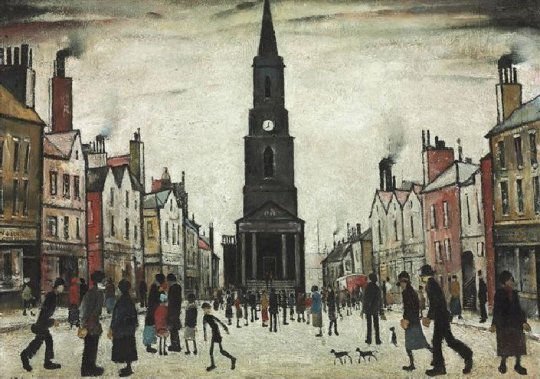
L. S. Lowry - A Market Place, Berwick-upon-Tweed, 1935
The rest of the works were due to go up for sale with Christie’s too, some of the works I own still have catalogue assignment stickers from the auction house on the back, but with the economic climate the Cambridge Council pulled the collection from auction and in 2017 they would come up again for sale with another auction house.
Although Nan Youngman was the organiser and originator of Pictures for Schools, she had the support of long-running exhibition secretaries, who themselves had interesting backgrounds and careers.
Slade-trained painter and writer Sylvia Pollak was the first Organising Secretary. She had, like Youngman and many of their circle, links with the Artists’ International Association and the Women’s International Art Club.
She was succeeded by art historian, writer and lecturer Alison Kelly, who had a particular interest in furniture and pottery, from 1950-1957, when she resigned to spend more time lecturing... During the war, Kelly had been flown around the country working on camouflage schemes for possible bombing targets such as factories.
Katharine Baker, who had been treasurer for the Society for Education through Art, took over from 1958-1967. She had previously worked for the British Institute for Adult Education, which during the war organised good design exhibitions, put pictures in air raid shelters, armed services establishments and British Restaurants, and sent exhibitions to outlying districts. She received a New Year’s day MBE in 1948 for her work on the ‘Art for the People’ travelling exhibitions.
Finally, Joan Bartlett was Organising Secretary from 1967 until after the exhibitions’ close in 1969, when the exhibitions were held at the Royal Academy’s Diploma Galleries.

Stephen Bone - Yachts Racing at Loosdrecht, (In My Collection)
The Stephen Bone painting above was bought direct from the artist himself as on the back are various notes and bills on Bone’s headed paper.
Youngman donated some of her paintings and linocuts to the collection, other artists in the collection are like a who’s who of British Art. Gertrude Hermes, Richard Bawden, John Piper, Anthony Day, Patrick Hughes, Enid Marx, Michael Rothenstein, Malvina Cheek, Robert Tavener, Julia Ball, Peter Nuttall, Richard Beer, George Chapman, Alistair Grant, Edwin La Dell, Rosemary Ellis, Tirzah Garwood and Evelyn Dunbar are but a few.

Nick Lyons - Between You and Me, 1977 (In My Collection)
As the Pictures for Schools scheme ended in the 1960s, in Cambridge the project continued under the name ‘Original Works for Children in Cambridgeshire’.

Malvina Cheek - Cornstooks at Furlongs, 1962 (In My Collection)
The Malvina Cheek drawing above came with some provenance.
I was staying at Furlongs when I drew the Corn Stooks . It was then a magical place, a shepherds cottage set in the shadow of the Downs. A gap in the wall leads up to the Downs. There was no electricity, no gas, only oil lamps and wood fires; a telephone the only concession to modern life.
In the fields alongside the cottage were pyramids of corn. The exciting shapes of the corn stooks attracted me. There was only time to draw, my daughter was very young, so I made studies hoping to develop them later. I also drew Dick Freeman, the farmer from whom Peggy leased her part of the cottage; he used an adjacent room where he rested after tending his sheep. There was always a pleasant speaking voice, a fine hooked nose and large hands like those in a Permeke drawing. Later I would use both the drawings of corn stooks and of Dick the farmer, I was commissioned to illustrate Gulliver’s Travels
Cheek also worked as part of the Recording Britain project.

Bernard Cheese - The Lemon Seller (In My Collection)
Walter Hoyle the Great Bardfield artist took over the scheme in the 1970s. Hoyle donated a few pictures and convinced other artists to donate works to the project too. Hoyle came to be involved as he was working at the Cambridge School of Art, now part of the Anglia Ruskin University. He would teach printmaking in the St Barnabas Press, a premises that the art school rented and he would encourage his pupils to donate a print to the collection. It may also explain how a fellow Bardfield artist, Bernard Cheese gets into the collection. Hoyle retired from teaching in 1985, moving from Cambridge to Hastings and Dieppe.

Warwick Hutton - Adam and Eve, 1986 (In My Collection)
We know the Original Works for Children in Cambridgeshire continued until 1985 when the project was run by the council and in the mid 1990s, the Council wound down the project citing the expenses of transporting the art around, hanging and administration costs and the works were stored in a shed outside Huntington Library and in a community centre in Papworth for the next 15 years.
The works by Walter Hoyle and Warwick Hutton in the collection were given with expenses for framing to the artists. Warwick Hutton’s painting of ‘Adam and Eve’ followed with a book he published in 1987 under the same name by Hutton with Atheneum Books.

Poul Webb - Petersfield (In My Collection)
Many of the works that Hoyle encouraged his students to make were prints, Poul Webb remembered making the print above in various colourways to me when I contacted him and he now works mostly as a painter with a totally different style. The picture below by Glyn Thomas is unlike his style now too, he works in drawings and etchings but Hoyle must have been an interesting man to work under as many of the artworks have a bit of Rothenstein or Bawden in them, I guess due to the Bardfield connections.

Glyn Thomas - Corn Exchange, Cambridge, 1965 (In My Collection)
It wasn’t just Bernard Cheese and Walter Hoyle that had works in the collection from Great Bardfield. Tizah Garwood had a painting in the collection of two donkeys. Chloe Cheese also had two prints in the collection.

Tirzah Garwood - Nathaniel and Patsy

Chloe Cheese - Figs and Coffee, 1972 (In My Collection)

Norma Jameson - Black Cockerel (In My Collection)

Marion Crawford - Agriculture (In My Collection)
#great bardfield#chloe cheese#tirzah garwood#walter hoyle#poul webb#in my collection#Malvina Cheek#Warwick Hutton
3 notes
·
View notes